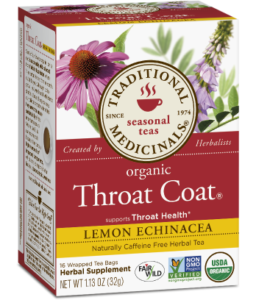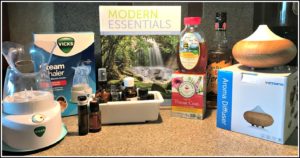Using Natural Remedies to Ward Off Laryngitis
I’ve been a long-time believer of natural remedies. The healing power of nature is amazing. There are so many avenues, it’s often mind-boggling.
I have used natural remedies to cure tendonitis, boost my immune system, sleep better, relax, increase energy, control cholesterol, and ward off cancer. I follow a Paleo/anticancer diet which eliminates all processed foods. I have had great success using natural means to ward off health concerns.
This success makes me a true believer in this quote:
This year has been extremely busy. With the release of the second edition of Notes from the Grooming Table, I have been doing a lot of speaking engagements. I also have a long history of losing my voice when I speak for extended periods. I’m just very prone to laryngitis.
I always feel fine – I just can’t speak above a very soft whisper. Normally, I have been able to get through my events before I lost my voice. This year was different. I was consistently losing my voice after just two lectures.
I had been hired by Barkleigh Productions to speak at Groom Expo. A few weeks before the show, reality started to sink in. I had been hired to give seven lectures over the weekend! Not only was I speaking, I had a judging assignment, too. In addition, I was attending the Barkleigh Honor Awards banquet for two nominations: Website of the Year and Book of the Year. When you factor in all of the talking that happens at any trade show, I knew laryngitis was likely. What would I do if people couldn’t hear one of my hour-long presentations? How could I motivate, inspire, or teach them if I couldn’t speak?
I needed to keep my voice.
 At the Atlanta Pet Fair, Lisa and Eric Leady introduced me to an organic tea that their daughter Amanda drank before singing engagements. My husband ran out right away and got me a box of Throat Coat by Traditional Medicinals. After drinking a few cups over night, my voice came back.
At the Atlanta Pet Fair, Lisa and Eric Leady introduced me to an organic tea that their daughter Amanda drank before singing engagements. My husband ran out right away and got me a box of Throat Coat by Traditional Medicinals. After drinking a few cups over night, my voice came back.
About a week before the Hershey show, I reached out on Facebook and asked if anybody had any suggestions on natural preventatives for laryngitis. I was flooded with suggestions!
Luckily, there are many common threads. Added humidity, essential oils combined with tea, honey, and lemon were the top contenders. I narrowed down the comments into the following treatment plan.
Humidity
When I thought back on my speaking engagements for this year, I realized all were in hotels or convention centers with air conditioning. Hmmm… Air-conditioning removes humidity from the air. Could that be a major cause for my bouts with laryngitis?
Many of the comments suggested running a hot shower in the hotel room to build up humidity levels. Other people suggested running a humidifier.
I didn’t do either. I took it one step further.
We were traveling and staying in our coach at a local RV park. We opted to leave the windows open versus running the air conditioner which would have reduced the natural humidity levels.
I knew I had a steam inhaler sitting in the cabinet. It got packed into the coach. I used it at least three times a day while I was speaking – with a few drops of essential oils.
Essential Oils
 For years I had been hearing about the powers of essential oils. I had dabbled in it, but hadn’t yet jumped on the bandwagon. I even had two books outlining suggested usage for essential oils, as well as all the items that go along with using them! I was totally ready to jump in!
For years I had been hearing about the powers of essential oils. I had dabbled in it, but hadn’t yet jumped on the bandwagon. I even had two books outlining suggested usage for essential oils, as well as all the items that go along with using them! I was totally ready to jump in!
For laryngitis, I used a combination of sandalwood, frankincense, and lavender in a variety of ways. It was also heavily suggested that I boost my immune system by using Doterra “On Guard,” an essential oil protective blend.
Here’s how I used the essential oils.
I mixed On Guard with fractionated coconut oil according to directions in my book. I put this mixture in a small rollerball applicator. I started using On Guard about a week prior to the event. I put it on my wrists, forearms, and the bottoms of my feet several times during the day.
I also mixed sandalwood with fractionated coconut oil according to instructions and put it in a small rollerball applicator. This would be applied to my forearms and my throat five or six times a day while I was speaking.
I started to put On Guard into my diffuser. I ran the diffuser whenever we were in the coach. The diffuser added the immunity boosting properties of On Guard into the air. The little bit of the humidity it added didn’t hurt either! Plus, it smelled great!
The steam inhaler was a great bonus item. I really feel it helped keep my voice strong. I spent about 20 minutes, three times a day, using the steam inhaler that contained a drop of sandalwood, frankincense, and lavender essential oils.
Tea
 As soon as we arrived in Hershey, I started drinking my Throat Coat tea. There are two types, one with lemon and one without. I have used both with great success. I would start my day with a nice mug of hot tea and one or two tablespoons of honey. I continued to drink the tea and honey throughout the day. It was always in my spill-proof travel mug and never far from my side. On a rare evening occasion, I’d even added a small splash of Jim Beam Honey to the brew. It’s not the best way to stick to my overall diet plan, but it’s sure a great way to wind down after a long day!
As soon as we arrived in Hershey, I started drinking my Throat Coat tea. There are two types, one with lemon and one without. I have used both with great success. I would start my day with a nice mug of hot tea and one or two tablespoons of honey. I continued to drink the tea and honey throughout the day. It was always in my spill-proof travel mug and never far from my side. On a rare evening occasion, I’d even added a small splash of Jim Beam Honey to the brew. It’s not the best way to stick to my overall diet plan, but it’s sure a great way to wind down after a long day!
So how did my natural remedies work while I was at Groom Expo 2016?
I’ve got to be honest. I was a bit skeptical about my voice holding up, but I was still going strong after four lectures! I did fine through a judging assignment, another lecture, and the Barkleigh Honors Awards where I gave two acceptance speeches. My voice remained strong (okay, maybe a little jittery during the acceptance speeches) and I went into my third day with two more lectures without a hint of laryngitis!
I have become a true believer of the power of essential oils combined with other natural healing methods to overcome common ailments. I was thrilled with my results. In the future, the items pictured above will always be my traveling companions for any speaking engagement!
What natural methods do you swear by? Jump over to the Learn2GroomDogs Facebook page and tell us about it!
Happy trimming!
~ Melissa




 If you’ve been watching the news lately, you have probably heard about the newest illness threatening our pets. Canine influenza (CI), or dog flu, is a highly contagious infection that can have serious implications not only for our pets, but for your business and our industry.
If you’ve been watching the news lately, you have probably heard about the newest illness threatening our pets. Canine influenza (CI), or dog flu, is a highly contagious infection that can have serious implications not only for our pets, but for your business and our industry. Preventing the Flu: Step One
Preventing the Flu: Step One